For thousands of years, we’ve always had the notion that there are only four basic tastes—sweet, sour, bitter, and salty. Little did we know, there was still a fifth one, which was discovered in the early 1900s, called umami which translates to “savory” in English.
Umami is the meaty, savory flavor that we taste in food. It’s the sensation that makes our mouth water when we eat certain kinds of food, especially broth or food mixed with it. It’s a little bit close to salty, but not quite like it, due to its main component, glutamate. Umami also has two other components, 5’ - inosinate and 5’ - guanylate.
Filipino cuisine has many meat recipes, many of which express bold flavors. One good example is adobo, meat marinated and cooked in a concoction of soy sauce, vinegar, pepper, and bay leaves. Each ingredient packs a punch which is enhanced by umami that comes from the meat and soy sauce.
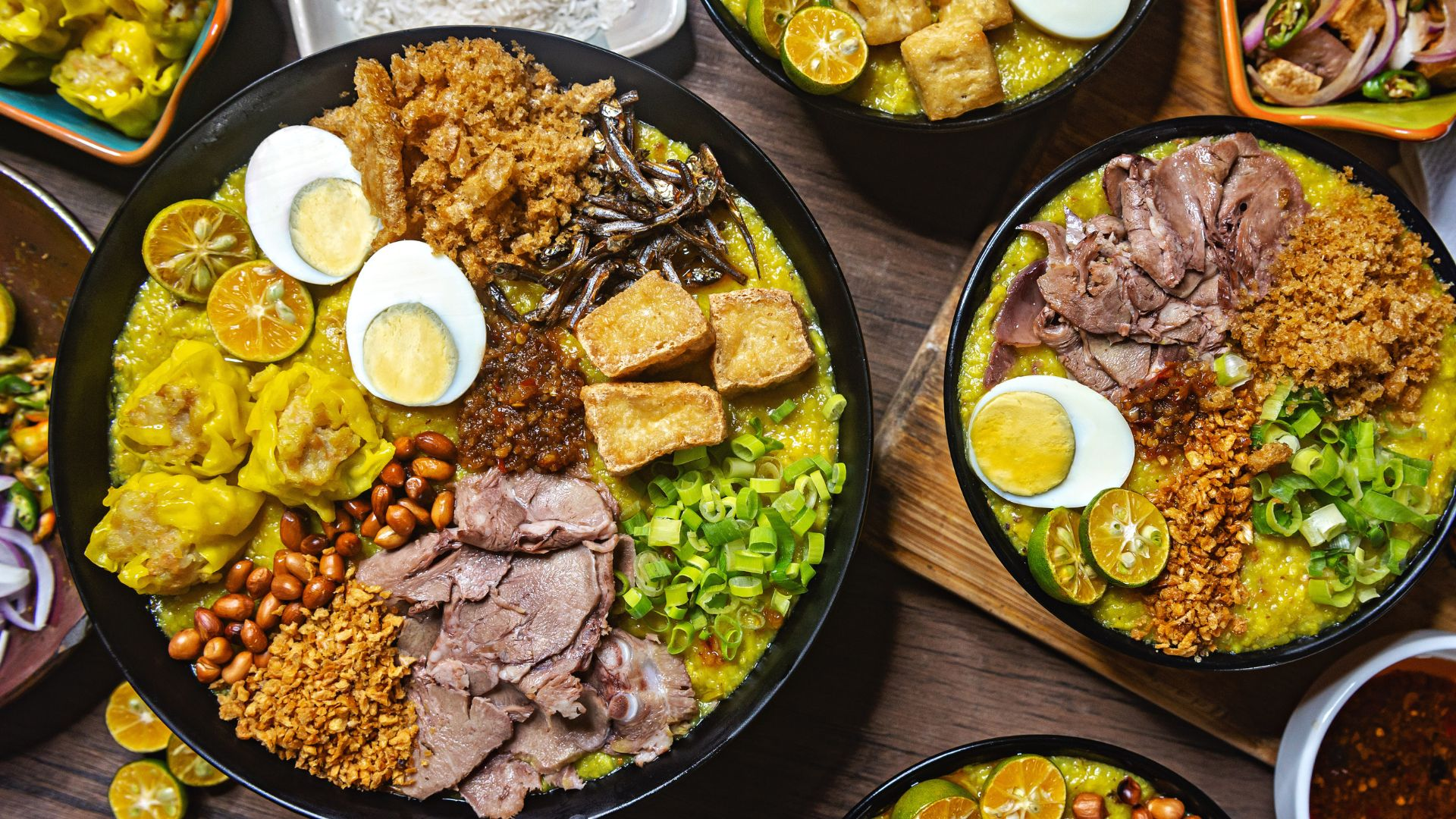
And adobo is only at the tip of the iceberg since there’s a lot more umami flavor that Filipino cuisine has to offer. If you love the sensations that umami brings, you’ll definitely love Filipino food.
What is Umami?
Kikunae Ikeda discovered umami in the early 1900s by studying what makes seaweed taste so good. In an experiment, he isolated 30g of monosodium L-glutamate (MSG) from simmering 38kg of dried kelp, the secret ingredient that brings out umami in food. Dr. Ikeda patented his invention as a seasoning and came to Saburosuke Suzuki II for funding his research, as well as marketing and mass production, which later evolved into the company “Ajinomoto.”
To understand umami, we first must understand how our taste buds work. Contrary to popular belief, different areas on the tongue aren’t responsible for picking up specific tastes.
Our tongues have taste receptors that activate when they come into contact with chemicals that provide a particular sensation.
For example, when we eat fruit, our taste receptors detect certain chemicals contained within the fruit (sucrose and fructose) and tell us that we’re eating something sweet.
Our sense of smell also plays a significant factor in taste. In simpler terms, it gives the taste “color” and gives us the complete “image” of the food that we’re eating. It is said that 80% of taste comes from our sense of smell.
When we eat food, these chemicals stimulate taste receptors in our tongue, and, coincidentally, our smell receptor does the same. Then, taste and smell receptors talk to each other and create the entire “image” of taste. That’s why food may seem flavorless or tasteless when we lose our sense of smell from colds or flu.
Where Does Umami Come From?
Generally, umami comes from food that contains the three amino acid compounds glutamate, guanylate, and inosinate. These amino acids are primarily found in meat, mushrooms, fish, shellfish, vegetable broth, and fermented foods and sauces. Inosinate is much more commonly found in meat, fish, and fermented food, while guanylate is more prevalent in vegetables.
Since these three amino acids come from protein, umami is nature’s way of telling us that we’re eating protein, so we need to consume more to sustain our body’s needs. A study comparing the free amino acid content in standard infant formula and human milk said that our first encounter with umami is from breast milk, wherein glutamic acid makes up half of its free amino acids.

Filipino Dishes Rich in Umami
Traditional Filipino dish is a melting pot of cultures from traders and its colonial past. It is complex, rich, and incredibly diverse—and much of the explosion of flavors it provides is attributed to the extensive use of ingredients that pack a heavy punch of umami. Filipinos aren't just known for their sweet tooth—meats, vegetables, broths, and fermented sauces are also widely-used ingredients that make up Filipino dishes.
So, let’s explore this array of savory Filipino food, cooking techniques, ingredients, and how umami plays an integral role in shaping this fantastic cuisine.
Beef Caldereta
Beef caldereta is a hearty and popular social gathering dish packed to the brim with umami, mainly due to its various ingredients of beef, potatoes, cheese, tomatoes, peas, onions, and ketchup. Usually, beef caldereta is slowly cooked in a concoction of aromatics, vegetables, and sauces, until all the liquid is reduced to a thick and flavourful gravy and the beef becomes tender. It is then topped with cheese to add depth and complexity.
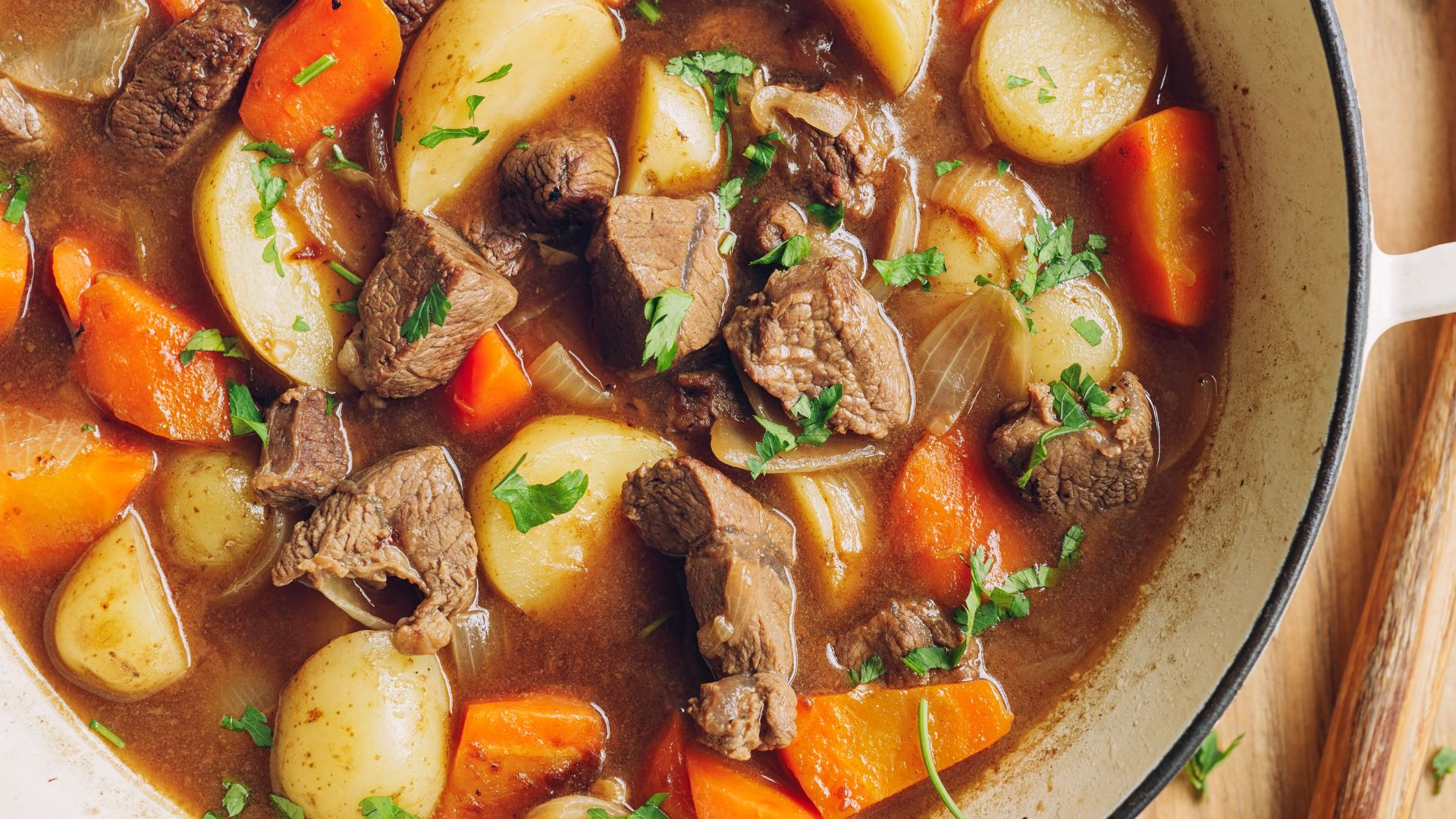
Beef caldereta is considered the Filipino version of beef stew. The similarities are apparent when you put the two dishes together, especially when it comes to the ingredients and cooking methods used. However, beef caldereta has something that makes it different—its sweetness. Beef caldereta is relatively sweet since it uses banana ketchup instead of tomato paste.
Also, caldereta isn’t just limited to beef; multiple types of meat can be used to make it depending on availability. Filipinos sometimes substitute beef with pork, chicken, and goat meat. Still, the flavor never changes, and the taste of that luscious gravy remains the same; only the protein component is altered.
Rellenong Bangus
Making rellenong bangus or “stuffed milkfish” is considered a labor of love. The amount of work that goes into it can be very tedious and time-consuming, not including the cooking part. From skinning the fish, deboning it, scraping meat off its skin, and putting all the ingredients inside the skin to be deep-fried whole—you’ll see why this prized dish is beloved by most Filipinos.
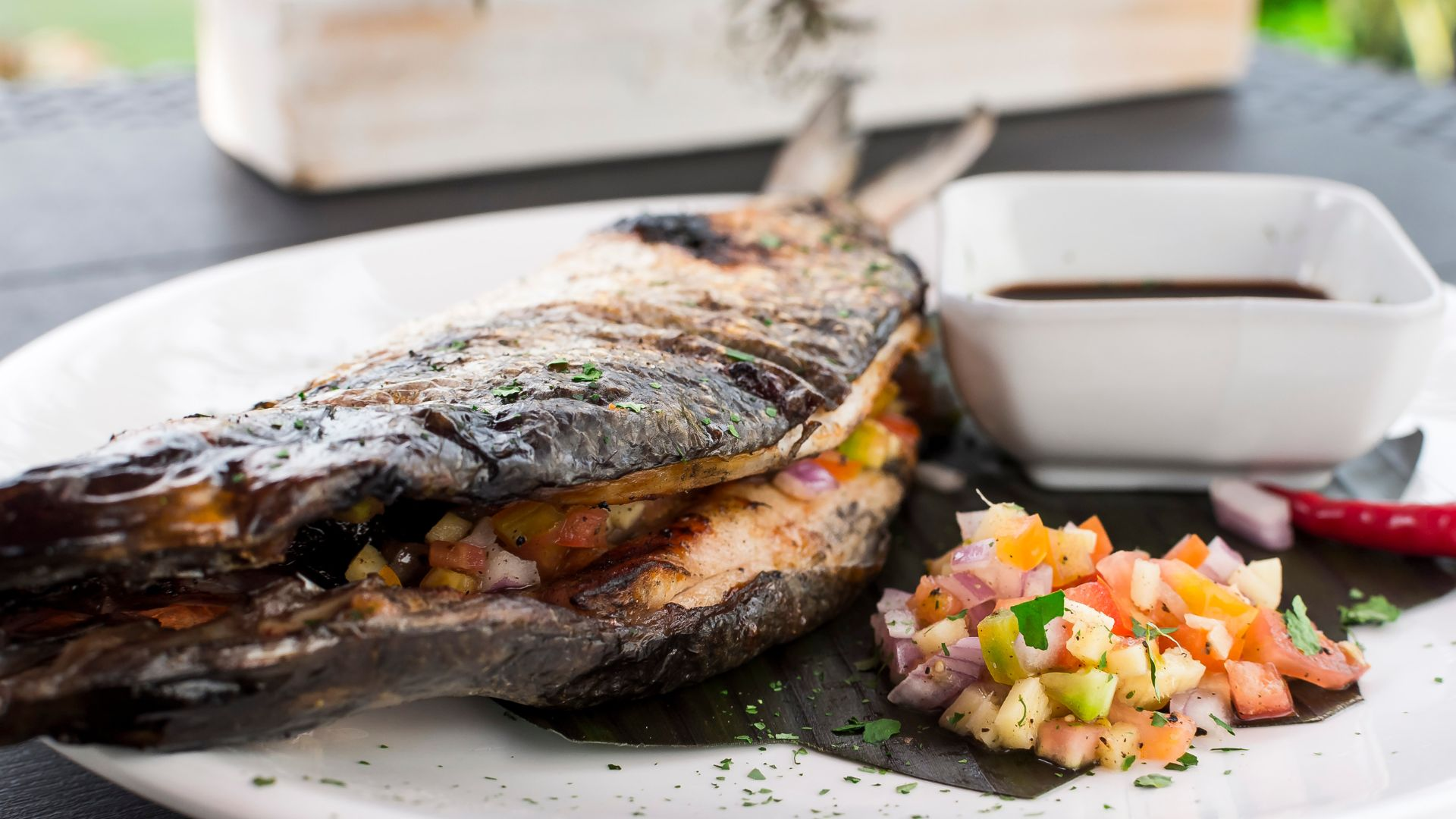
However, all that work is worth it when everything’s said and done. The fantastic combination of umami-filled pan-fried chili peppers, onions, garlic, carrots, and minced fish meat, explodes in your mouth and overwhelms it with complex flavors. Not only that, but the crispy marinated skin provides this dish with an extra layer of texture.
Bicol Express
Bicol express is a hot and spicy dish made from simmering strips of pork meat in a mixture of coconut milk, onions, copious amounts of chilis, garlic, and oil. The most notable thing about this dish is its one-two combination of punches and kicks of umami and spiciness. The name comes from the Filipino Bicol region, known for active volcanoes and spicy food.
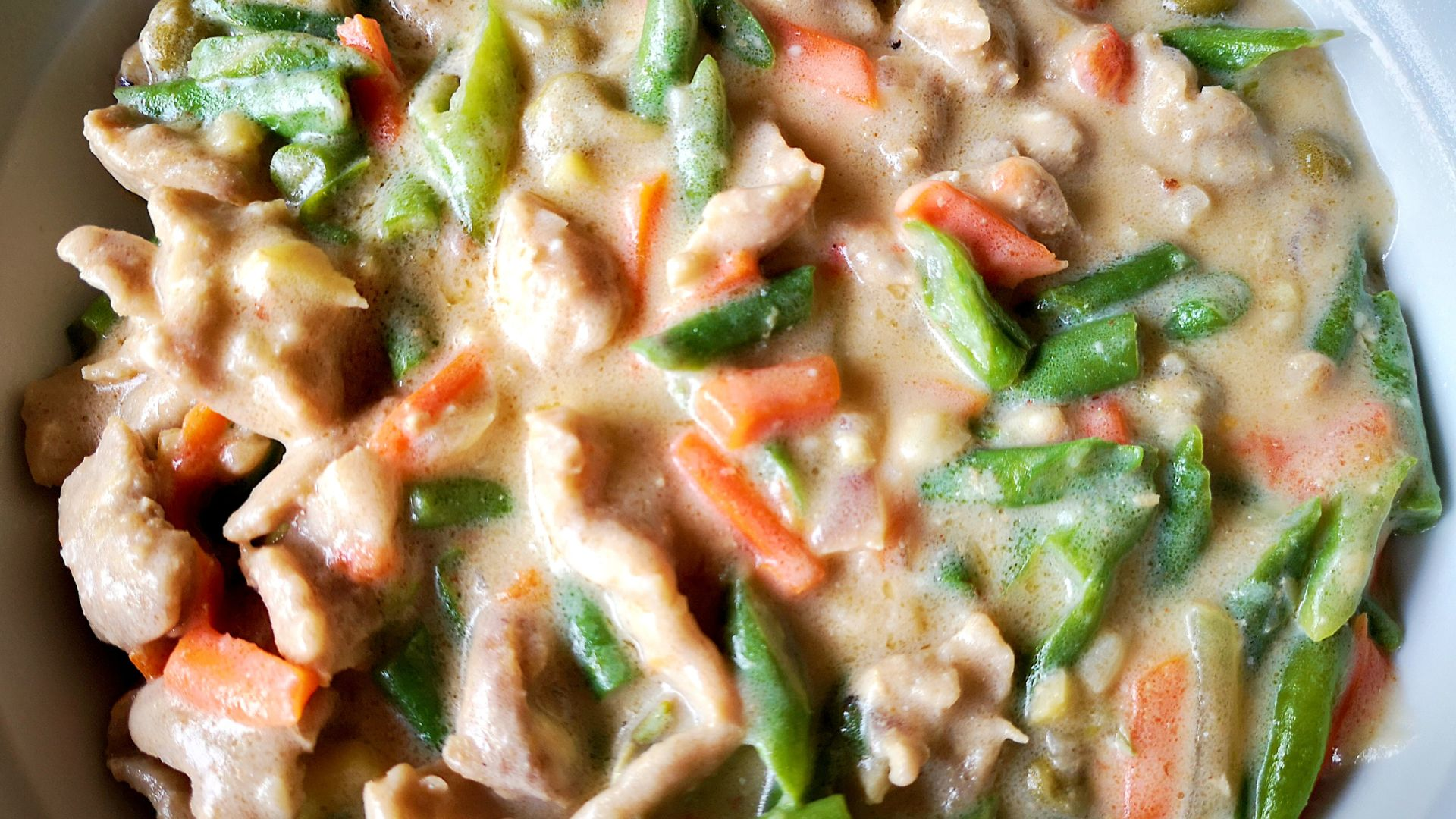
So, when you eat Bicol express, ensure you’re ready to set your tongue on fire and experience the king of Filipino spicy food. Don’t forget to bring a glass of water and milk ready—just in case.
Kare-Kare
Kare-kare is a delicious dish made by cooking ox tail, beef skin, and beef tripe in a thick peanut stew filled with vegetables like string beans, eggplant, peanut butter, and crushed peanuts, then mixed with fermented shrimp paste for saltiness and complexity. Kare-kare is also a popular party dish typically cooked on special occasions.
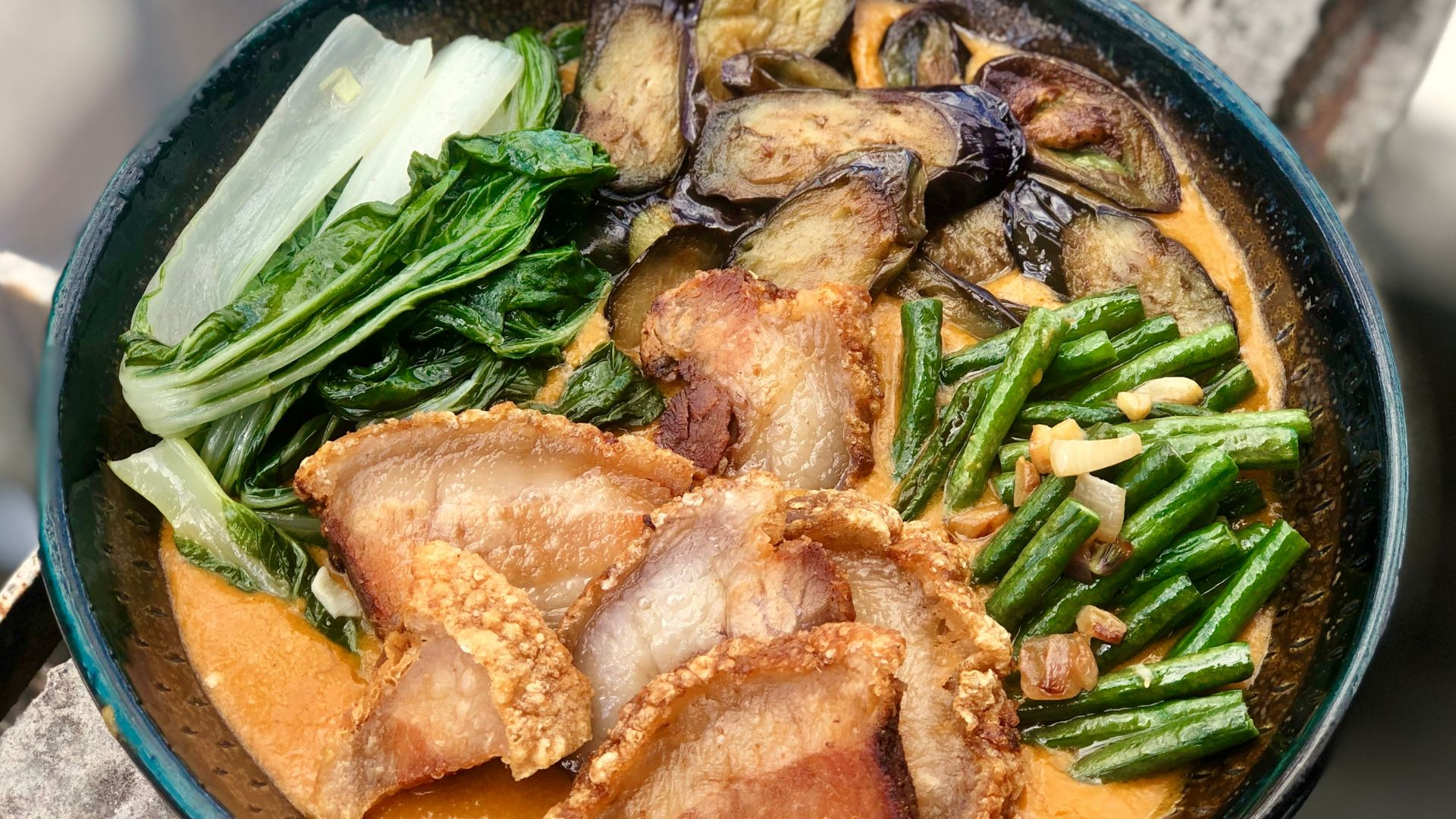
Roughly every ingredient used to make kare-kare is filled with umami, from the meat in beef, the various vegetables, peanuts, and, of course, the fermented shrimp paste. You’ll feel your mouth water once you get a whiff of this delicious Filipino classic. Pair it with a bowl of steamed rice to balance all the flavors, and you’re one step closer to heaven.
Dinuguan
Dinuguan is a dish that sounds worse than it tastes. It’s made from pork’s blood and is, strangely enough, quite delicious. It is made by cooking pork meat in various aromatics like onions, garlic, leeks, and chilis, then diced and sauteed along with pork blood, then simmered until all the liquid turns into gravy.
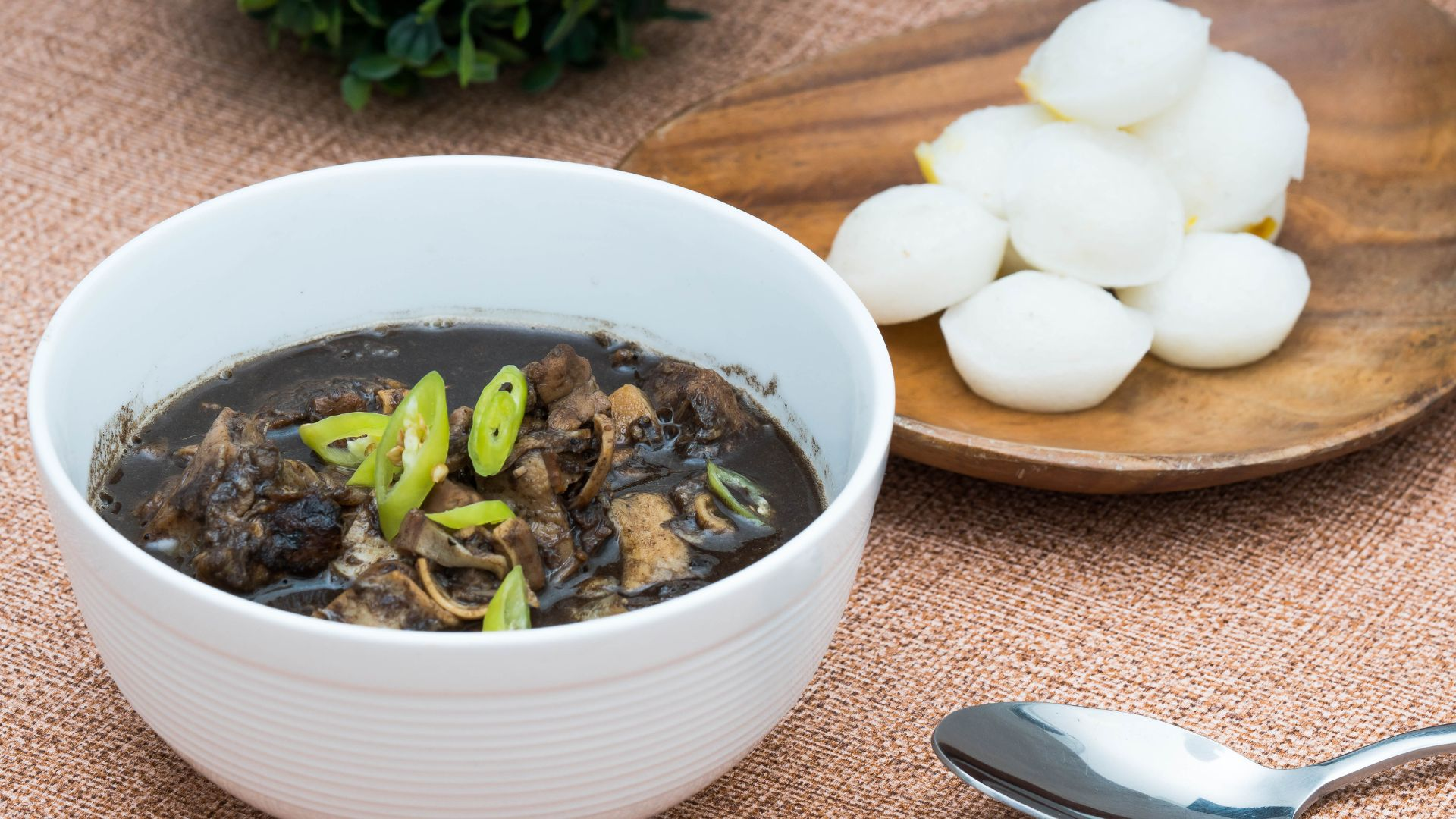
Dinuguan comes from the Filipino word “dugo,” which means blood in English. The pork’s blood gives it a distinct and savory taste and honestly does not smell or taste like blood when fully cooked, and it actually smells quite excellent and fragrant from the aromatics it was cooked with. Dinuguan traditionally uses pork intestines and liver, but some families just use pork shank instead to entice kids who are still uncomfortable with the idea of this delicious dish.
Sisig
Sisig can be said to be every Filipino’s favorite food when drinking. However, this delectable dish isn’t just served during drinking sessions; it’s also a great meal in itself, as many Filipinos cook it and pair it with rice if they’re craving something savory.

This pork dish is made from diced pork face or belly with pork liver, boiled pork or pork slices this dish is incredibly complex with flavors of savory and different levels of textures from chewy cartilage, crispy pork skin, and tender liver. Pair it with an ice-cold beer, and you’re all set for a night of drinking. With some side to include rice porridge, spring onions , arroz caldo, steamed white rice or golden brown rice.
Sisig is made with grilled pork, diced, then mixed with sauteed onions, garlic, and chili on a sizzling hot plate smeared with butter. It is then sprinkled with generous amounts of calamansi juice, a citrus fruit more sour than lemon, then finally topped with a raw egg.
Sisig is a dish of resourcefulness. It was originally invented in Pampanga when American soldiers stationed in Clark Air Force Base used to throw away parts of the pigs they consumed. Filipinos collected parts like the face and internal organs, then made something out of it to avoid wasting the whole pig. Fast forward to now, and sisig reigns supreme as the ultimate bar chow in the Philippines.
Bulalo
Bulalo is pure umami; you’ll see why in a second. Bulalo is a clear broth soup with beef shanks, corn, and aromatics like onion, leeks, and garlic. How your bulalo would taste largely depends on the quality of the beef you use since you’ll be simmering those beef shanks for hours on end until all of that fantastic beef flavors are infused into the soup.
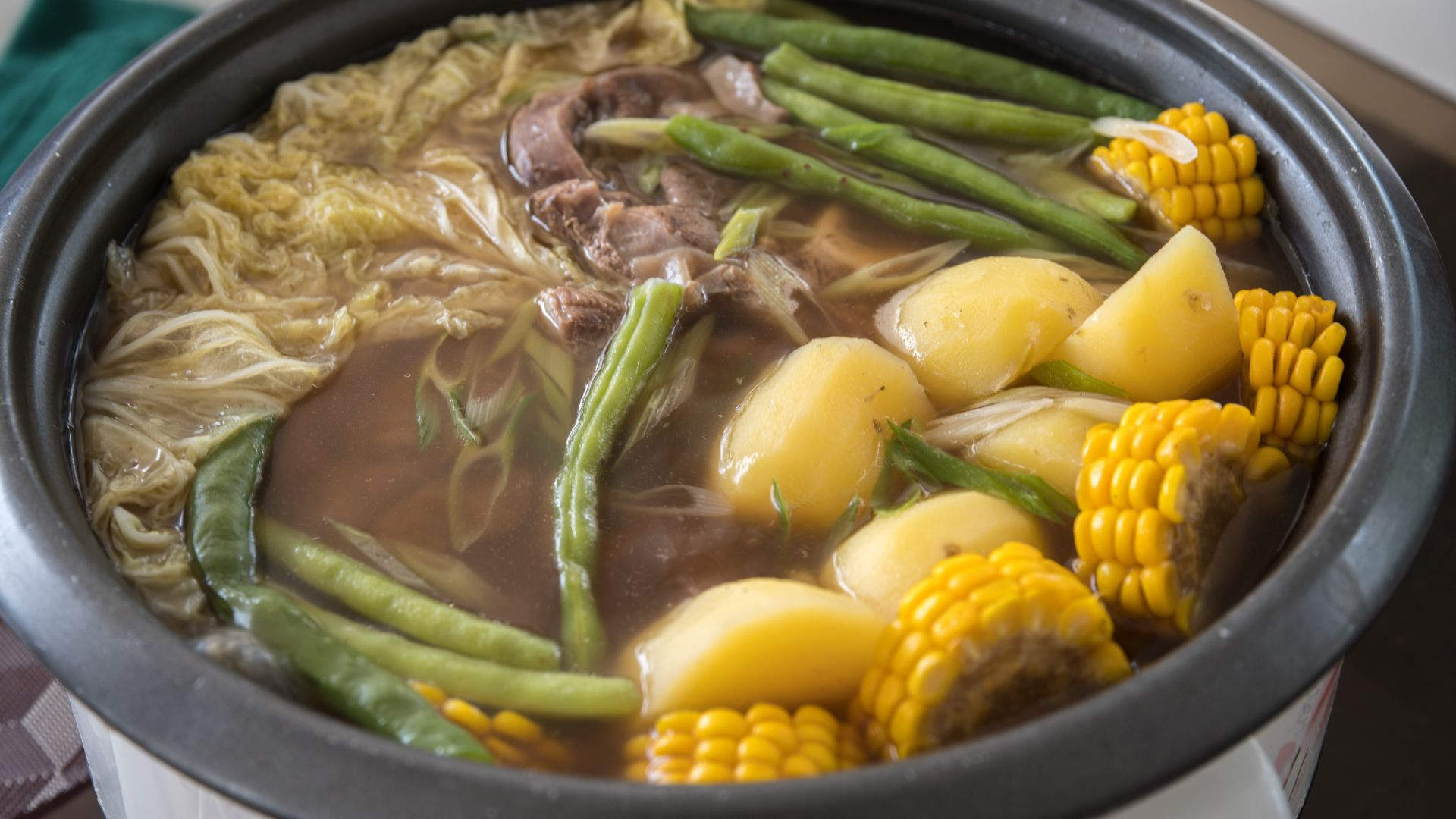
Once the broth is complete, the dish is poured with aromatics and sweet corn to give it a strong corned flavor profile. Everything is then simmered until the beef is tender enough to be broken apart by a fork. The best part about this dish is the bone marrow, which easily slips out of the bone due to its tenderness.
Longganisa
If you love cured meat, then longganisa might strike your fancy. It’s the Filipino version of breakfast sausages and is made with ground pork, onions, garlic, lots of sugar, curing salt, and pepper–then stuffed inside sausage casings. Longganisa is usually eaten at breakfast with a fried egg and then paired with a tomato salad dip.
The curing process of this meat substantially improves its umami levels, and the sweetness from the sugar is a nice touch as well.
Adobo
We’ve saved the best for last; no Filipino cuisine list is complete without adding the Philippine national dish, Adobo. Traditionally, Adobo is made by simmering pork or chicken meat in a concoction of soy sauce, vinegar, bay leaves, and whole peppercorns. This seemingly simple dish is beloved by all, and every Filipino family has its own personal recipe.
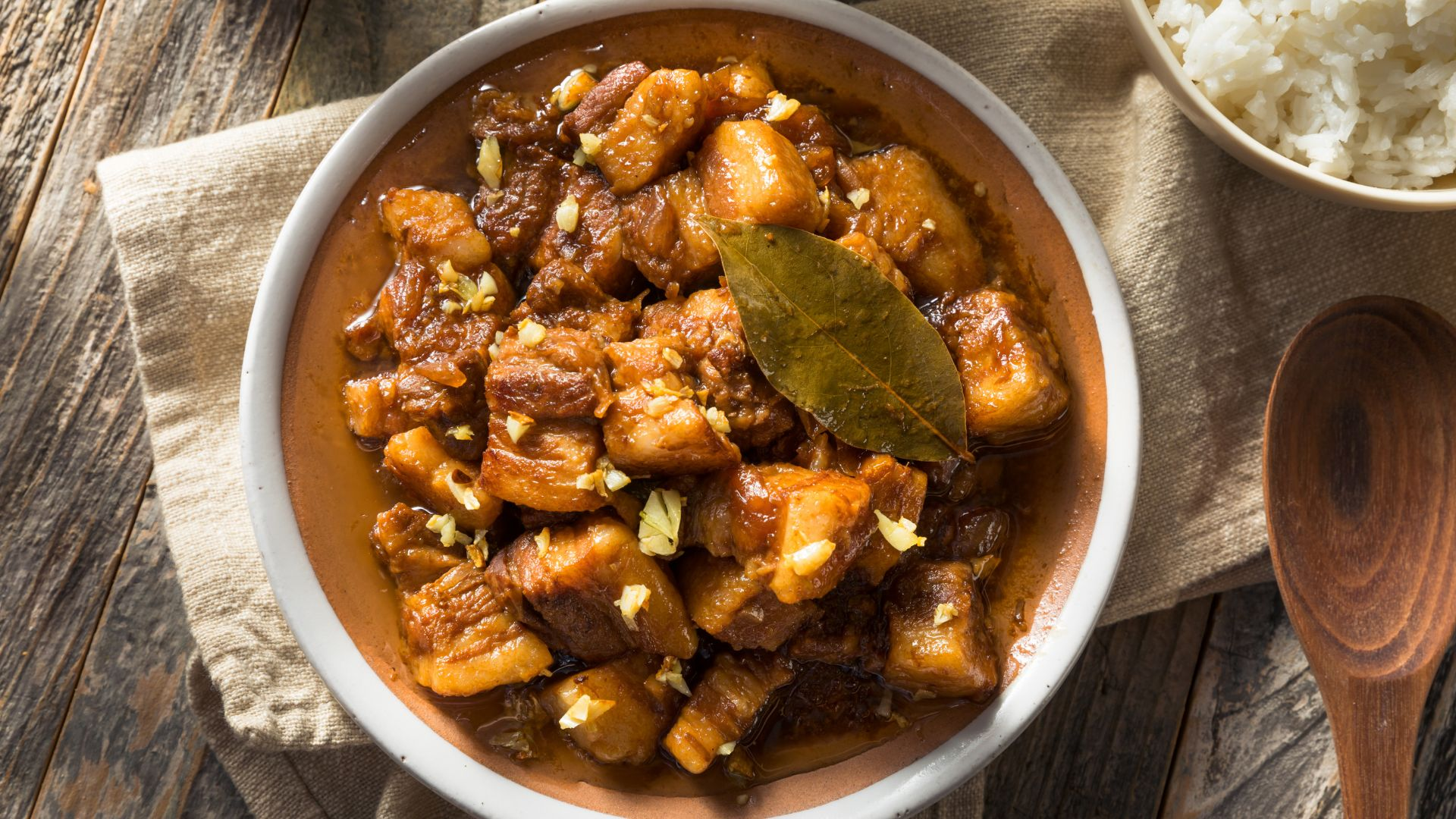
One of the most remarkable qualities of adobo is it’s very flexible. As long as the star ingredients are there, soy sauce, vinegar, and bay leaves, you can practically add and use anything you want to fit your taste. Adobo also exemplifies the Filipinos' adaptability and resourcefulness, which makes it worthy of its title as the national dish.
Other Sources of Umami
If you still can’t get enough umami, try these ingredients. Consider adding them when you need a quick pinch of savory flavors in your dishes. You’ll be surprised at how common some of these ingredients are.
- Seaweed - Packed with L-glutamate, this ingredient was eventually processed and turned into the mega company called Ajinomoto.
- Fermented food - Fermented food like kimchi, bean paste, shrimp paste, dashi, and bonito flakes are filled to the brim with umami.
- Cheese - The complex taste of cheese is attributed to its high glutamic acid content.
- Soy-based food - Soy-based food, particularly soy sauce, is an excellent addition to make any dish savory. Popularly used by Asian kitchens worldwide, soy sauce is a classic ingredient great for dipping sauce.
- Tomatoes - Cooked, as a sauce, raw, or just as a garnish, tomatoes are an excellent source of plant-based umami. They are a perfect addition to a vegetarian diet with limited sources of umami from omitting the meat.
- Mushrooms - Like tomatoes, mushrooms are a great alternative to meat since it’s filled with glutamic acid.
- Seafood - Fish and shellfish are a great source of inosinate and get better and better, especially if paired with another umami source like glutamate to make its flavor more complex.
- Meat - Arguably the largest source of glutamic acid, if umami is the meaty sensation you taste from food, it can’t get any better with the source of the name itself.
Conclusion
Filipino cuisine is as varied as many other food cultures worldwide. And like all cultures, Filipinos will always ensure that the food they make tastes fantastic. Filipino food accomplishes this task with flying colors by using ingredients that are rich in umami. Just one bite of a Filipino dish like adobo, and you’ll see how umami plays a crucial role in making this cuisine world-class.
Frequently Asked Questions (FAQs)
What is the most famous Filipino dish.
1. Adobo - a dish made with pork or chicken, soy sauce, vinegar, garlic, and black pepper.
2. Pancit - noodles stir-fried with vegetables and meat or seafood
3. Sinigang - a sour soup made with pork, beef, shrimp, or fish
4. Lechon - roasted pig that is the national dish of the Philippines
5. Halo-halo - a dessert made with shaved ice, evaporated milk, sweetened condensed milk, fruit preserves, and sometimes ice cream
What does umami taste like
Umami is a difficult taste to describe because it's complex and nuanced. Some say it's a savory, meaty flavor, while others describe it as mushroom-like or even cheesy. It's definitely a unique flavor that can be hard to put your finger on, but once you experience it, you'll know it!
Traditional Filipino food With Umami Flavor
If you're looking for traditional Filipino foods with an umami flavor, you won't be disappointed. Many of the most popular dishes in Filipino cuisine are packed with umami goodness.
One great example is sinigang, a tamarind-based soup that is often made with meats or seafood. Sinigang is sour and savory all at once, and the addition of umami-rich ingredients like shrimp paste or fish sauce takes it to another level.
Another well-known dish that gets its delicious umami flavor from shrimp paste is bagoong rice. This popular dish consists of rice flavored with bagoong (a type of fermented shrimp paste) and often topped with grilled meats or vegetables.
Best Filipino dishes with garlic fried rice
There knockout dishes in Filipino cuisine and garlic fried rice is definitely one of them! This dish is usually served as a main course, but it can also be a delicious side.Garlic fried rice is traditionally made with white rice, but you can use brown rice for a healthier option. The key to making great garlic fried rice is to fry the garlic in oil until it's nice and crispy. This adds tons of flavor to the dish!
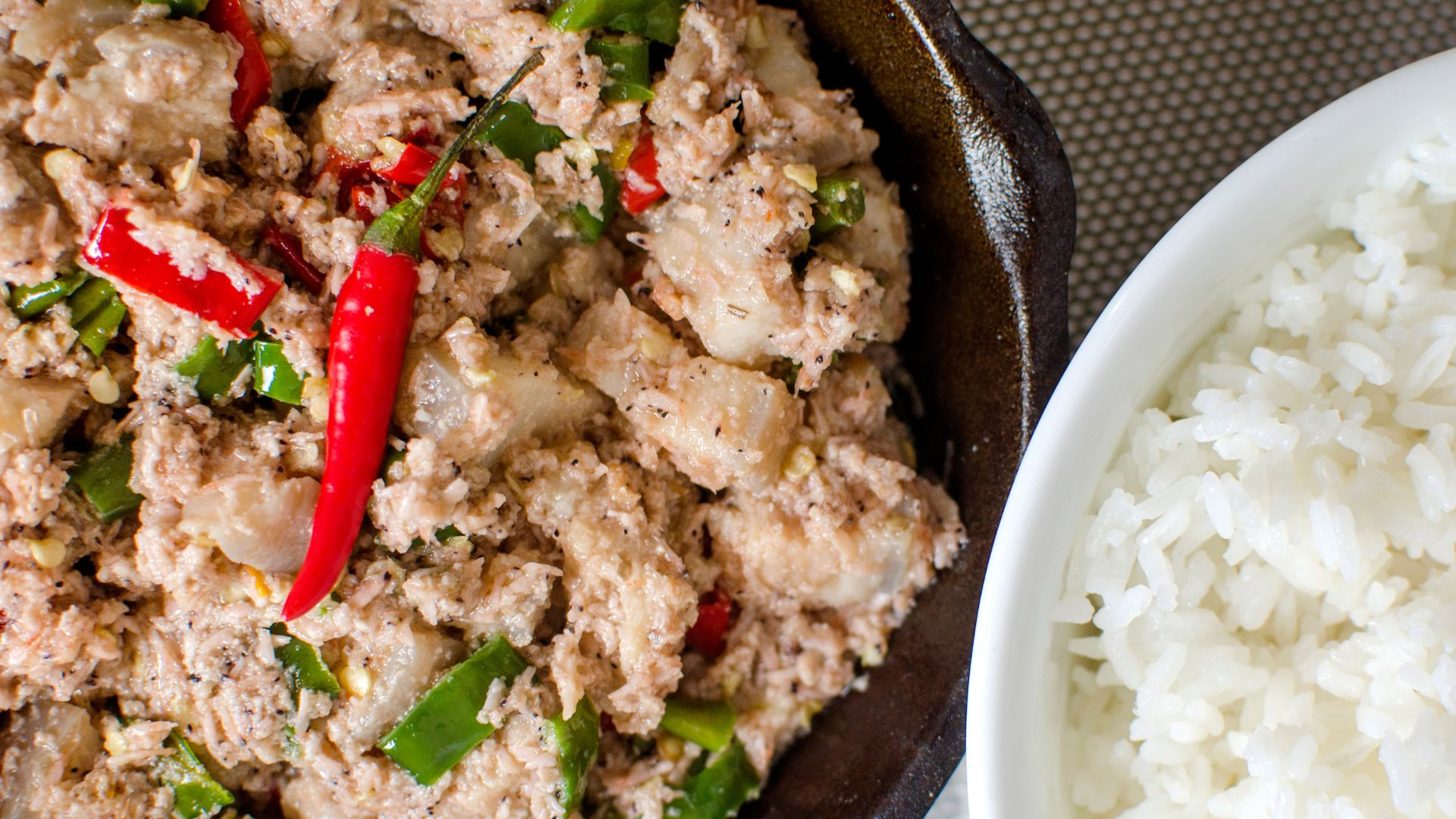
Top Filipino condiment with every meal
One of my favorite Filipino condiments is shrimp paste. It's a really strong, pungent sauce that's made from fermented shrimp and salt. I love it because it adds a ton of flavor to dishes, and it's perfect for adding a kick of spice to any meal. Plus, it's really healthy for you too - shrimp paste is high in omega-3 fatty acids, which are great for your health. A few other examples are tomato sauce or soy sauce and vinegar make great dipping sauce.
Best Filipino top spices for cooking
There are many delicious spices used in Filipino cooking, but some of the most popular ones include garlic, onion, black pepper, soy sauce and vinegar, ginger, and coconut milk. These spices add flavor and depth to dishes and can be used in a variety of ways. For example, garlic can be fried or roasted, onion can be sautéed or fried, black pepper can be added to sauces or marinades, ginger can be used fresh or ground into a paste, and coconut milk can be used as a base for curries or soups. With so many flavorful options to choose from, it's easy to create unique and tasty Filipino dishes.
What are the top popular Filipino street food

There are so many delicious Filipino street foods, but some of the most popular include:
-durian ice cream
-balut (duck embryo)
-pork belly adobo
-chicharron (pork rinds)
-lechon manok (roasted chicken)
-lumpia (spring rolls)
-halo halo (a dessert with shaved ice, evaporated milk, sweet beans, and other ingredients)

